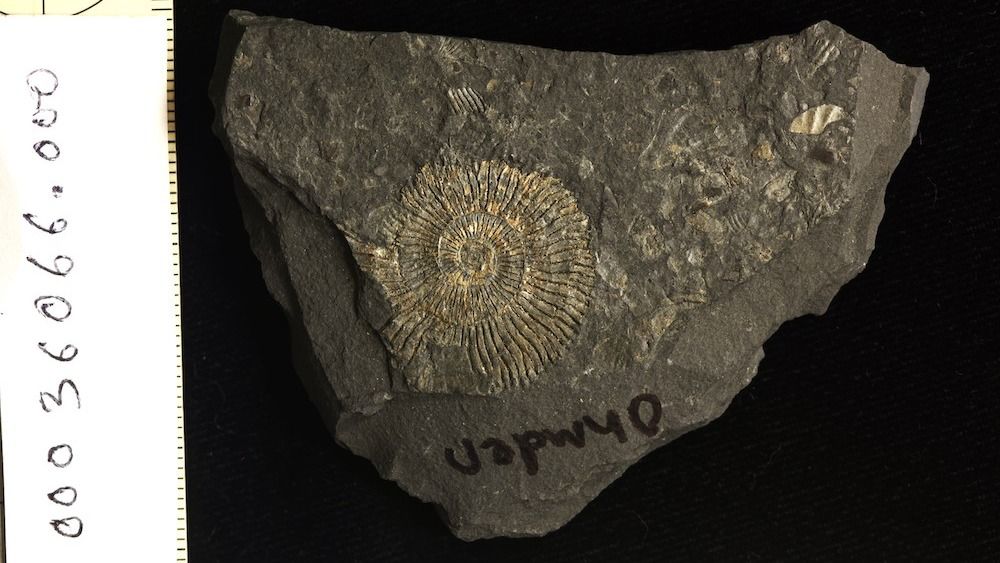
It was long thought that pyrite — a shiny mineral also known as fool's gold — was the special ingredient that gave fossils embedded in Germany's Posidonia Shale their golden glow. But now scientists think something else is causing these fossils to shimmer.
Earlier this year, a team of international researchers visited the Early Jurassic site known for its exceptionally well-preserved fossils of marine animals. They collected dozens of samples of fossilized ammonites, bivalves and crustaceans that were about palm-size or larger.
Once the team viewed the roughly 183 million-year-old fossils using a high-powered scanning electron microscope, they struggled to find any pyrite in the fossils poking out of the black shale, according to a study published in the March 2023 edition of the journal Earth-Science Reviews (opens in new tab).
"It was long believed that everything [at the Posidonia Shale] was pyritized," study co-author Rowan Martindale (opens in new tab), an associate professor in the Department of Geological Sciences at the University of Texas (UT) at Austin, told Live Science. "We picked samples that we thought for sure would be all pyrite. And lo and behold there was a little bit of pyrite on a couple of them, but basically it was all phosphatized or yellow calcite. It was pretty much a shock to all of us who worked on the paper."
After analyzing roughly 70 specimens, it was clear that while the shale surrounding the fossils was "dotted with microscopic clusters of pyrite crystals, called framboids," it was phosphate minerals with yellow calcite that were the source of the fossils' golden glow, according to a statement (opens in new tab).
Related: Trilobites had a hidden third eye, new fossils reveal
"The framboids look like tiny raspberries," study co-author Sinjini Sinha (opens in new tab), a doctoral candidate in the Jackson School of Geosciences at UT, told Live Science. "After looking at the specimens under a microscope, I only found a few framboids on the fossils themselves but counted 600 to 800 on the surrounding shale."
Knowing that pyrite and phosphate are present in different parts of the specimens is crucial since it reveals information about the fossilization environment. For example, pyrite forms in anoxic environments where there's no oxygen present, whereas phosphate minerals like yellow calcite need oxygen to form, according to the statement.
"The pyritization process only takes place in anoxic environments," study co-author James Schiffbauer (opens in new tab), an associate professor of geological sciences at the University of Missouri, told Live Science. "These [specimens] are found in dark, black shales where we expected this to be an anoxic environment."
The research revealed that even though an anoxic seafloor "set the stage for fossilization," it took a burst of oxygen to cause the chemical reactions necessary for fossilization to occur. The oxygenation combined with the phosphate minerals helped turn the fossils into what looks like gold, according to the statement.
https://ift.tt/VX76wLq
Science
No comments:
Post a Comment